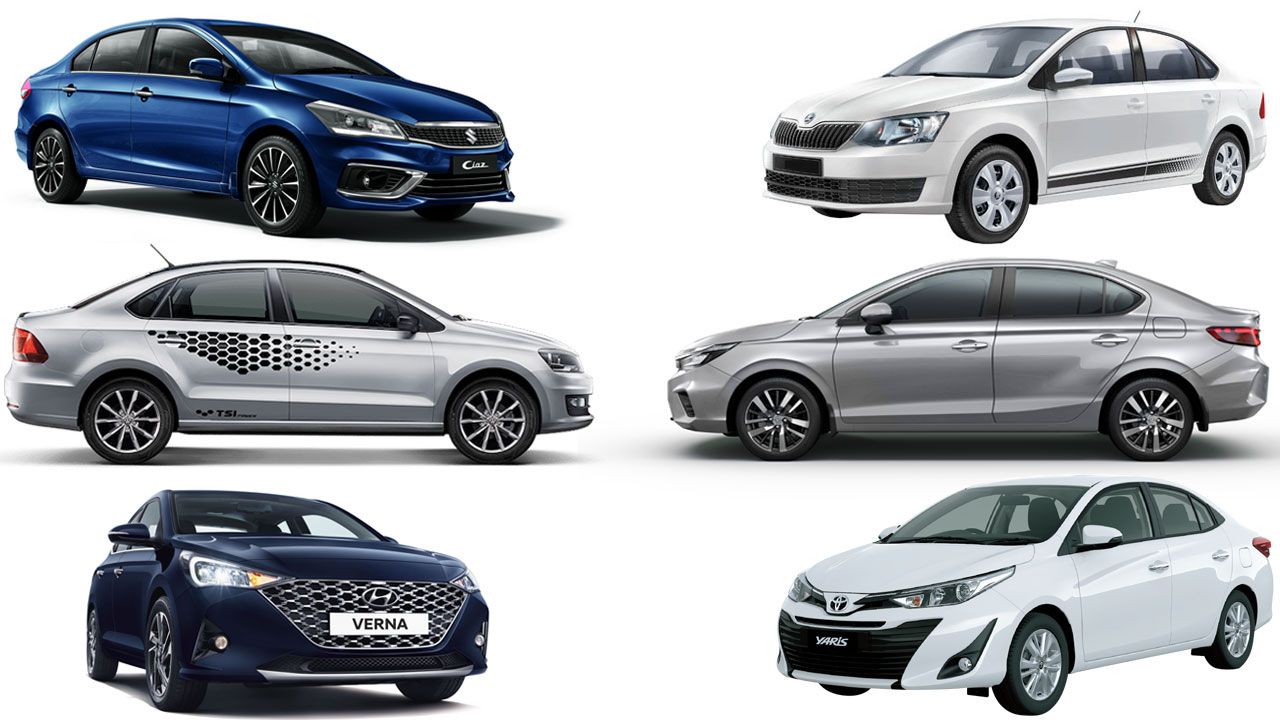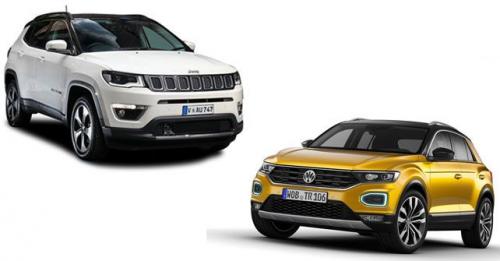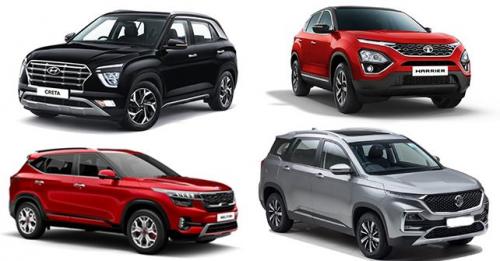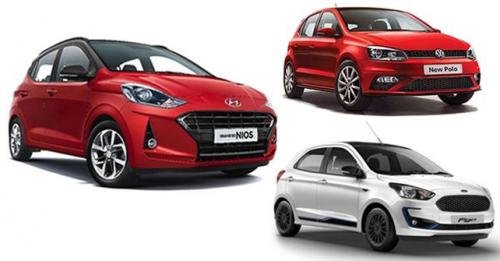
Here’s a detailed look at how the new City compares to all of its rivals in the mid-size sedan segment.
In all of its various avatars, the Honda City has always remained the definitive mid-size sedan. Each generation model has brought with it a bunch of core strengths that have always made it the segment favourite. And the latest fifth-generation City appears to be no different than its predecessors in its ability to move the goal posts for the segment once again. The new Honda City is bigger than ever before and really redefines the equipment list for cars, which is incredibly well spread across all variants. What’s more, it once again has a spirited petrol engine, thanks to its new twin-cam setup with Variable Valve Timing Control (VTC).
So, without further ado, here’s a look at how the new City stacks up against its rivals on paper.
| Dimensions | ||||
| Honda City | Hyundai Verna | Maruti Suzuki Ciaz | Volkswagen Vento | |
| Length | 4594mm | 4440mm | 4490mm | 4390mm |
| Wheelbase | 2600mm | 2600mm | 2650mm | 2553mm |
| Width | 1748mm | 1729mm | 1730mm | 1699mm |
| Height | 1489mm | 1745mm | 1486mm | 1467mm |
| Weight | 1107-1592kg | NA | 1,055-1,065 kg | 1138kg |
| Boot space | 506 litres | 480 litres | 510 litres | 494mm |
| Skoda Rapid | Toyota Yaris | |
| Length | 4413mm | 4425mm |
| Wheelbase | 2552mm | 2550mm |
| Width | 1699mm | 1730mm |
| Height | 1466mm | 1495mm |
| Weight | 1112-1138kg | 1090-1135kg |
| Boot space | 460 litres | 476 litres |
The City is clearly the largest car in its class, but the Ciaz’s massive boot just about trumps in by 4 litres in terms of capacity. When it comes to cabin space its the City and Ciaz that lead, like earlier.
Under the hood
The new Honda City is the most powerful petrol car in its class, but the Verna turbo petrol does trump it in terms of peak torque which is significantly higher than the City’s 1bhp advantage over the standard Verna petrol. The Verna though offers the widest range of powertrain options with a choice of two engines and three gearbox options. The Ciaz meanwhile with its mild hybrid powertrain is the most fuel efficient car in its class.
| Petrol | ||||
| Honda City | Hyundai Verna | Maruti Suzuki Ciaz | Volkswagen Vento | |
| Displacement | 1498cc | 1497cc/998cc | 1462cc | 999cc |
| Cylinders | 4 | 4 or 3 | 4 | 3 |
| Power | 119bhp | 113bhp/118bhp | 103bhp | 108bhp |
| Torque | 145Nm | 144Nm/171Nm | 138Nm | 175Nm |
| Gearbox | 6MT/CVT | 6MT/6AT/7DCT | 6MT/4AT | 6MT/6AT |
| Fuel efficiency (km/l) | MT:17.8/AT:18.4 | MT: 17.7/AT:18.45/DCT:19.2 | MT:20.65/AT:20.04 | 17.69 |
| Mild Hybrid | No | No | Yes | No |
| Skoda Rapid | Toyota Yaris | |
| Displacement | 999cc | 1496cc |
| Cylinders | 3 | 4 |
| Power | 108bhp | 105bhp |
| Torque | 175Nm | 140Nm |
| Gearbox | 6MT | 6MT/CVT |
| Fuel efficiency (km/l) | 18.97 | MT:17.1/AT:17.8 |
| Mild Hybrid | No | No |
With the upgrade to BS6 emissions regulations, it’s only the City and Verna that now offer diesel engine options. And even here the Verna trumps the City in terms of powertrain options with the availability of a diesel automatic model on offer, whereas the City only has a single diesel manual model.
| Diesel | ||
| Honda City | Hyundai Verna | |
| Displacement | 1493cc | 1497cc |
| Cylinders | 4 | 4 |
| Power | 98bhp @ 3,600rpm | 113bhp @ 4,000rpm |
| Torque | 200Nm @ 1,750rpm | 250Nm @ 1,500-2,750rpm |
| Gearbox | 6MT | 6MT/6AT |
| Fuel efficiency (km/l) | MT:24.1km/l | MT: 25/AT:21.3 |
When it comes to equipment, the new Honda City really is a class apart with even the base V variant offering a lengthy equipment list featuring everything from LED headlamps and tail lamps, alloy wheels, four airbags, height adjustable driver’s seat, touchscreen infotainment system with Alexa connectivity and a whole lot more. The top-end Honda City ZX meanwhile offers everything from automatic lights, a sunroof, LED fog lamps, ambient lighting, digital instrument cluster, curtain airbags, lane watch camera, walk away automatic locking, etc.
When it comes to equipment, the Hyundai Verna offers a lot too with connected car technology, front parking sensors, split screen infotainment system, wireless phone charging, a sunroof, digital instrument cluster and more. What’s more, the 1.0-litre turbo petrol model even gets a sport all-black interior with red stitching and black exterior trim fittings.
In contrast to the City and the Verna, the other cars here have relatively restrained equipment lists as they are now significantly older models compared to the City and Verna. Although, it’s worth noting that Hyundai has worked overtime to ensure that the recent update of the Verna has everything it needs in terms of equipment to satisfy the demanding Indian customer.
| Petrol price range | |
| Honda City | Rs. 10.90 lakh - Rs. 14.45 lakh |
| Hyundai Verna | Rs. 9.30 lakh - Rs. 13.99 lakh |
| Maruti Suzuki Ciaz | Rs. 8.31 lakh - Rs. 11.09 lakh |
| Volkswagen Vento | Rs. 8.86 lakh - Rs. 13.29 lakh |
| Skoda Rapid | Rs. 7.49 lakh - Rs. 11.79 lakh |
| Toyota Yaris | Rs. 8.86 lakh to Rs. 14.30 lakh |
| Diesel price range | |
| Honda City | Rs. 12.40 lakh - Rs. 14.65 lakh |
| Hyundai Verna | Rs. 10.65 lakh - Rs. 15.09 lakh |
The new City has been well priced for a change and this makes it more competitive than it’s been in the recent generation. That said, the likes of the Skoda Rapid and Maruti Suzuki Ciaz have more affordable base variant prices that make them fairly affordable in today’s times when premium hatchbacks cost more. In case of the diesel model, the Verna provides a far more attractive starting price, but the top-end automatic model tends to become expensive, but then again that’s because of the availability of the automatic transmission.
Also, read - 2020 Honda City Review























Write your Comment